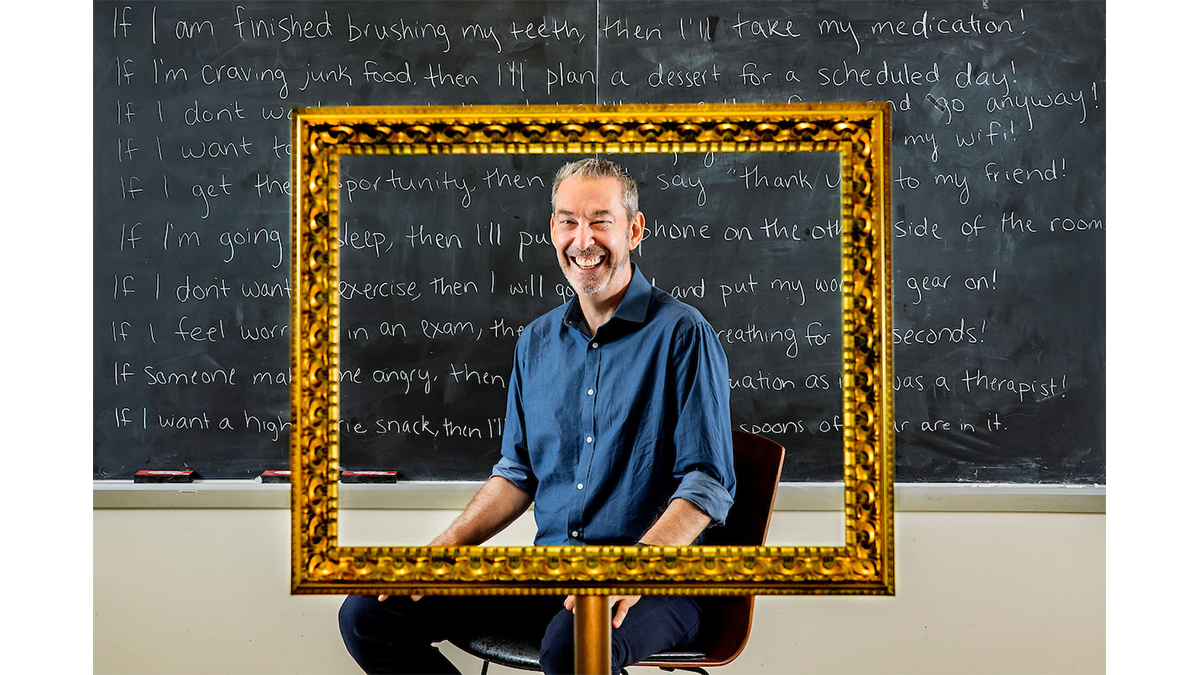How to accomplish almost any goal
Paschal Sheeran’s research has found that we successfully achieve our goals only half the time. Here he shares three steps to go from dreaming to doing.

We all daydream about our goals — getting that promotion, giving up smoking or spending less time on social media. But research shows that no matter how good our intentions, we only reach our goals about 50% of the time.
“Everybody has goals. They want to lose weight, exercise more, control their emotions. So why don’t they?” asked Paschal Sheeran, a professor of psychology at the University of North Carolina at Chapel Hill’s College of Arts & Science.
Sheeran, who first documented the gap between our intentions and our behaviors in 2002, has dedicated his career to answering that question. And while it takes hard work to achieve a goal, it turns out the basic steps to get there are relatively simple.
Here he shares three tips to help you make your goals a reality.
Add reality to your daydreaming.
Positive thinking usually seems like a good idea, but when it comes to our goals, daydreaming can actually stand in our way. Instead, Sheeran suggests also focusing on the obstacles.
“When you think about how wonderful it’s going to be when you achieve your dream, what you’re doing is savoring the pleasure now that comes from actually having done the work,” Sheeran said. “If you’re already savoring the pleasure that is going to come, why bother doing the work?”
The solution is called mental contrasting. When you think about how great it will be to achieve your goal, you should also ask yourself, “What is the biggest obstacle that prevents me from getting there?”
Mental contrasting helps bring your attention back to reality and motivates you to tackle the next roadblock.
Create an if-then plan.
How do you tackle roadblocks? Take a piece of paper and write down an if-then plan, filling in the blanks for your own goal: If (obstacle), then I will (response). For example: If I’m craving a cigarette, I will wait 10 minutes for the craving to pass.
“It seems ludicrously simple,” Sheeran said, but it works.
In a study on teen pregnancy prevention, Sheeran found that teens who used the if-then formula to plan contraceptive use decreased their risk of pregnancy by 40%. In another study, patients with epilepsy who used if-then plans to manage their medication use went from taking 50% of their pills on time, to 80% on time.
“It just alters the probability of doing the right thing at the right time,” he said. “You are basically deciding in advance how you want to respond, so that at the critical moment it becomes easier to act the way you want.”
Try “self-nudging.”
Self-nudging is about creating an environment where success is easier to achieve.
If you want to go to the gym in the morning, for example, put your gym bag on the doorstep. If you want to eat more fruit, place a bowl of fruit in a visible place in your kitchen. And if you want to eat fewer snacks, put them in the most awkward part of the freezer.
Another way to self-nudge is to plan out when you’re going to indulge — if you eat tiramisu seven days a week and want to eat it only three days a week, decide which three days you’ll have dessert.
“Life comes down to tiny moments. Can you get through this craving, rather than have a cigarette after you quit? Can you get through this moment where you want the tiramisu rather than following the diet?” Sheeran said. “The accumulation of those tiny moments is what makes a life and a lifestyle.”




